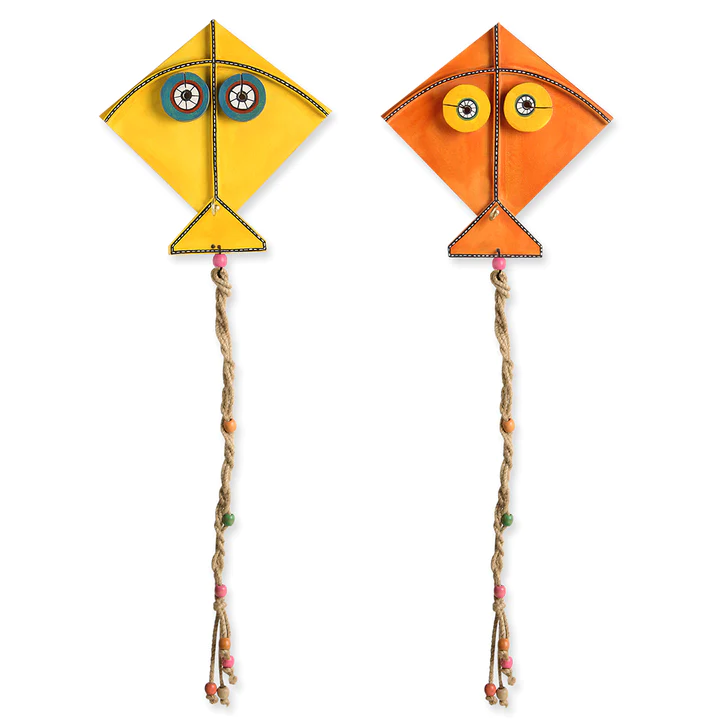Rogan Paintings
The Timeless Charm of Rogan Art: A Journey into India’s Handcrafted Legacy
The History of Rogan Art
Rogan Art has a rich and fascinating history rooted in cultural exchange and resilience. This craft was introduced to India by Persian traders during the 16th century, eventually finding a nurturing home in Gujarat’s Kutch district. Over the centuries, Rogan Art became an integral part of Gujarat’s cultural fabric, symbolizing prosperity, artistic excellence, and heritage.
Key Historical Milestones
- Persian Origins
Rogan Art has its roots in Persian culture, where the technique was initially used to create decorative textiles. It was brought to India by traders who recognized the potential for its expansion in the region. - Royal Patronage and Cultural Significance
In its early days, Rogan Art was reserved for royal families and the aristocracy. Its intricate patterns and vibrant colors were seen as symbols of opulence. Gradually, this art form became accessible to rural communities, enriching local traditions. - Survival Against Odds
By the mid-20th century, Rogan Art faced near extinction due to industrialization and a decline in demand for handmade crafts. However, the Khatri family in Nirona, Gujarat, played a pivotal role in its preservation, ensuring its survival through generations of dedication and innovation.
Introduction Process:
In the core of Nirona village in Kutch, a mesmerizing art form unfolds as skilled artisans engage in the intricate process of lacquer work. This age-old craft, deeply rooted in the cultural tapestry of the region, takes shape through a series of carefully composed steps. From the initial drawing of vertical lines to the transformation into dynamic zig-zag patterns, and the application of protective lacquer layers, each stage contributes to the creation of stunning wooden masterpieces. The meticulous scratching out of patterns, revealing layers of coloured lacquer beneath, adds a vibrant and dynamic dimension to the art. This process, laden with tradition and craftsmanship, not only showcases the unique heritage of Nirona but also exemplifies the artistic brilliance that defines this exceptional lacquer work.
Explore the Timeless Beauty of Rogan Art - Handcrafted Heritage at My Handicraft India
The artisans of Rogan Art are the heart and soul of this craft. Most of them begin their training at a young age, mastering the intricate techniques over several years. Inspired by nature, folklore, and local traditions, their designs often feature motifs like flowers, birds, and the iconic "Tree of Life."
Despite the challenges posed by modernization and limited market access, these artisans continue to innovate. Collaborations with designers and the introduction of Rogan-inspired contemporary products have expanded the craft’s appeal to a global audience.
GI Tag: Is Rogan Art Protected?
Yes, Rogan Art holds the prestigious Geographical Indication (GI) tag, which it received in 2009. This recognition safeguards the authenticity of Rogan Art, ensuring that it is produced exclusively in its place of origin—Nirona in Kutch. The GI tag also enhances the craft’s global reputation, making it a symbol of India’s rich cultural heritage.
Promoting Rogan Art
Rogan Art has evolved beyond its traditional applications, thanks to initiatives that promote "Vocal for Local" and global outreach. Platforms like My Handicraft India play a vital role in bringing this unique art form to customers worldwide.
- Buy Authentic Rogan Art
Purchasing Rogan Art directly from artisans ensures fair wages and supports the craft's preservation. - Spread Awareness
Sharing the history and beauty of Rogan Art through social media, blogs, and exhibitions helps educate people about its significance. - Vocal for Local to Global Reach
By promoting Rogan Art on platforms like www.myhandicraftindia.com, we can take this craft from local villages to international markets, celebrating India’s rich artistic legacy.
Conclusion
Rogan Art is a living testament to India’s artistic ingenuity and cultural heritage. Supporting this craft empowers the artisans who dedicate their lives to preserving it. Explore the timeless beauty of Rogan Art at My Handicraft India, and bring home a piece of India’s exquisite history
‘Kite Pals’ – Handcrafted Pine Wood & Jute Wall Hangings (Set of 2)
 157 Points
157 Points‘Owl Couple’ – Exquisite Hand-Carved & Hand-Painted Key Holder in Contemporary-Fusion Art!
 90 Points
90 Points‘Owl Family’ – Hand Carved & Hand-painted Key Holder in Contemporary-Fusion Art Form By My Handicraft India
 124 Points
124 Points“Brass, Wood & Color’s” – Madhu Bani Hand-Painted Dhokra Key Holder in Sheesham & Teak Wood (6 Hooks) by My Handicraft India
 179 Points
179 Points“In-key-genus” – A Harmony of Warli Hand painting and Dhokra Art by My Handicraft India! 🌈
 124 Points
124 Points“Shades of the Setting Sun” Mango Wood Table Lamp- A Sky-inspired Masterpiece
 150 Points
150 Points2024 New Design Blooming Faux Embroidered Gown – Festive Elegance | My HandiCraft India
 200 Points
200 Points2024 Pure Rayon Lehengacholi with Gamthi Lace Border – Elegant and Comfortable for Navratri
 400 Points
400 Points2024 Pure Rayon Lehengacholi with Gamthi Lace Border – Elegant and Comfortable for Navratri
 400 Points
400 Points2024 Pure Rayon Lehengacholi with Gamthi Lace Border – Elegant and Comfortable for Navratri
 400 Points
400 Points5 Mesmerizing Leheriya Print Lehenga Choli Sets You’ll Adore in 2025 My Handicraft India
 300 Points
300 Points7 Exquisite Premium Bandhej/Badhni Sarees Silk – Shop Now for Elegance & Tradition
 157 Points
157 PointsCRAFTS NEARBY :

Mata Ni Pachhedi Paintings
Nirona-Kutch

Bandhani Tie and Dye Craft
Nirona-Kutch

Bead Work
Nirona-Kutch

Patola Weaving
Nirona-Kutch
CATEGORY:
- Mata Ni Pachhedi Paintings
- Rogan Paintings
- Bead Work
- Bandhani Tie and Dye Craft
- Patola Weaving
- Sujuni Weaving
- Ajrakh Block Printing
TAGS:
- Mata Ni Pachhedi Paintings
- Rogan Paintings
- Bead Work
- Gujarat
- Bandhani Tie and Dye Craft
- Patola Weaving
- Rajasthan
- Sujuni Weaving
- Ajrakh Block Printing


















